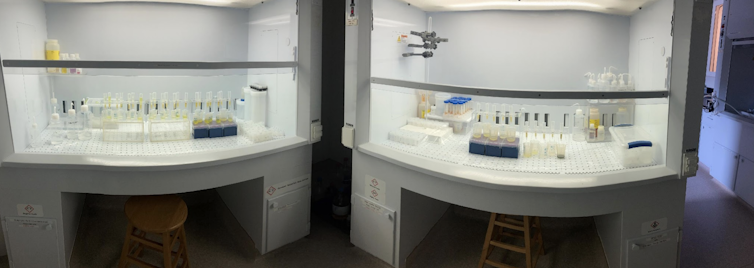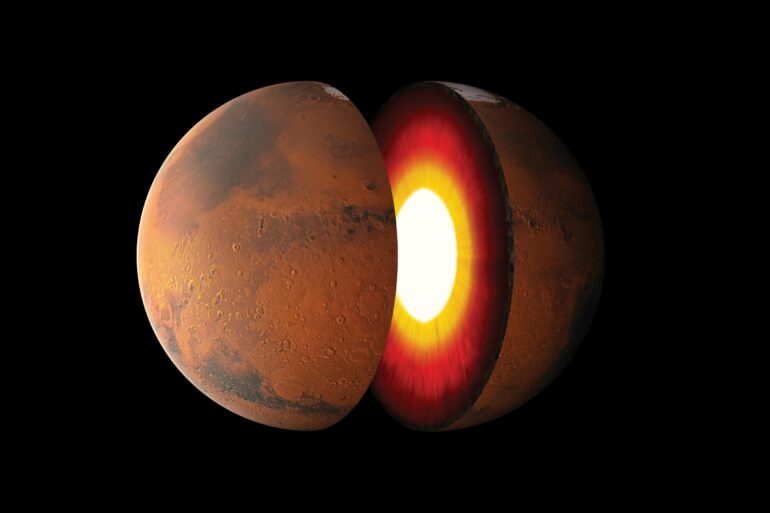Of the more than 74,000 known meteorites – rocks that fall to Earth from asteroids or planets colliding together – only 385 or so stones came from the planet Mars.
It’s not that hard for scientists to work out that these meteorites come from Mars. Various landers and rovers have been exploring Mars’ surface for decades. Some of the early missions – the Viking landers – had the equipment to measure the composition of the planet’s atmosphere. Scientists have shown that you can see this unique Martian atmospheric composition reflected in some of these meteorites.
Mars also has unique oxygen. Everything on Earth, including humans and the air we breathe, is made up of a specific composition of the three isotopes of the element oxygen: oxygen-16, oxygen-17 and oxygen-18. But Mars has an entirely different composition – it’s like a geochemical fingerprint for being Martian.
The Martian meteorites found on Earth give geologists like me hints about the makeup of the red planet and its history of volcanic activity. They allow us to study Mars without sending a spacecraft 140 million miles away.
A planet of paradoxes
These Martian meteorites formed from once red-hot magma within Mars. Once these volcanic rocks cooled and crystallized, radioactive elements within them started to decay, acting as a radiometric clock that enables scientists to tell when they formed.
From these radiometric ages, we know that some Martian meteorites are as little as 175 million years old, which is – geologically speaking – quite young. Conversely, some of the Martian meteorites are older, and formed close to the time Mars itself formed.
These Martian meteorites tell a story of a planet that has been volcanically active throughout its entire history. In fact, there’s potential for Martian volcanoes to erupt even today, though scientists have never seen such an eruption.
The rocks themselves also preserve chemical information that indicates some of the major events on Mars happened early in its history. Mars formed quite rapidly, 4.5 billion years ago, from gas and dust that made up the early solar system. Then, very soon after formation, its interior separated out into a metallic core and a solid rocky mantle and crust.
Since then, very little seems to have disturbed Mars’ interior – unlike Earth, where plate tectonics has acted to stir and homogenize its deep interior. To use a food analogy, the Earth’s interior is like a smoothie and Mars’ is like a chunky fruit salad.

Martian meteorite samples are prepared for analysis in a clean lab.
James Day
Martian volcano remnants
Understanding how Mars underwent such an early and violent adolescence, yet still may remain volcanically active today, is an area of great interest to me. I would like to know what the inside of Mars looks like, and how its interior makeup might explain features, like volcanoes, on the red planet’s surface.
When…



